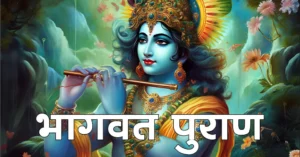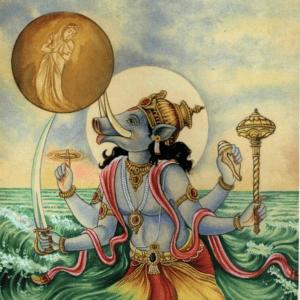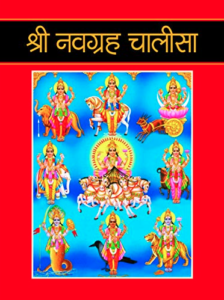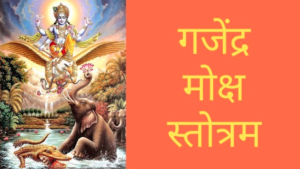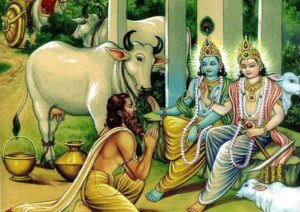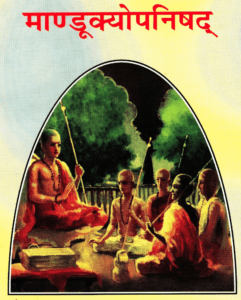Brahma Vaivarta Puran
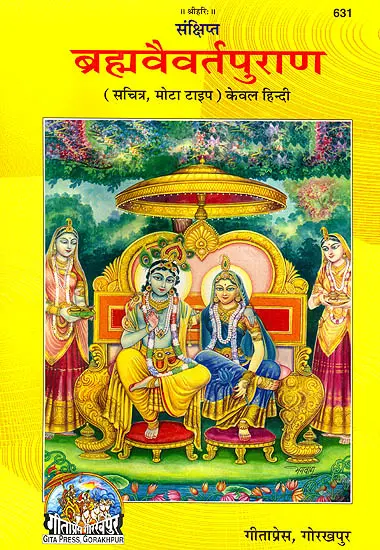
Read or Download Brahma Vaivarta Puran
Brahma Vaivarta Purana: Unveiling the Mysteries of Creation and Cosmic Order
In the rich tapestry of Hindu scriptures, the Brahma Vaivarta Purana stands as a fascinating exploration of cosmology, spirituality, and the eternal dance of creation. Also known as the Brahma Vaivarta Purana, this ancient text is believed to have been narrated by Lord Krishna to Sage Narada and later expanded by Vyasa. Comprising four parts—Brahma Khanda, Prakriti Khanda, Ganapati Khanda, and Krsna Janma Khanda—the Purana delves into the creation of the universe, the divine play of Lord Krishna, and the intricate threads that weave the cosmic order.
Brahma Vaivarta Purana and the Cosmic Creation:
The Brahma Vaivarta Purana begins with the cosmogonic narrative of creation. It describes the emergence of the cosmic egg (Hiranyagarbha) from the primal waters, symbolizing the potential for creation. Within this cosmic egg, Lord Brahma, the creator deity, is said to manifest, tasked with the responsibility of shaping the universe. The narrative unfolds the process of creation, outlining the birth of gods, goddesses, and the intricate web of existence.
Radha-Krishna Narrative:
A distinctive feature of the Brahma Vaivarta Purana is its elaboration on the Radha-Krishna narrative. The Purana introduces Radha as the divine consort of Lord Krishna, portraying their eternal and transcendental love. The ecstatic love between Radha and Krishna becomes a central theme, emphasizing the mystical union between the individual soul (jiva) and the supreme consciousness (Brahman). The Radha-Krishna leelas, or divine play, provide a poetic and philosophical dimension to the Purana.
Ganapati Khanda:
The Ganapati Khanda, a section within the Brahma Vaivarta Purana, is dedicated to Lord Ganapati. It narrates the story of Ganapati’s birth and underscores his significance as the remover of obstacles. The Ganapati Khanda also introduces the worship of Ganesha, emphasizing the spiritual merit gained through devotion to the elephant-headed deity.
Prakriti Khanda:
The Prakriti Khanda of the Brahma Vaivarta Purana delves into the concept of Prakriti, the primal and unmanifested nature from which the material world arises. It explores the interplay between Purusha (consciousness) and Prakriti (matter), illustrating the dance of cosmic energies that give rise to the diversity of creation. This section serves as a philosophical guide, unraveling the layers of existence and the fundamental principles governing the universe.
Krishna Janma Khanda:
The Krishna Janma Khanda is a pivotal section of the Brahma Vaivarta Purana that narrates the divine birth and exploits of Lord Krishna. It provides intricate details about Krishna’s childhood, his miracles, and the cosmic battles he engages in. The text not only presents Krishna as a divine avatar but also emphasizes his role as the ultimate reality, the source of all creation.
Spiritual Insights and Teachings:
Woven within the narrative fabric of the Brahma Vaivarta Purana are spiritual insights and teachings that guide seekers on the path of self-realization. The Purana expounds on the principles of devotion (bhakti), emphasizing the transformative power of surrender to the divine. It also delves into the significance of righteous conduct (dharma) and the pursuit of knowledge (jnana) as integral components of spiritual growth.
Concept of Time and Cycles:
The Brahma Vaivarta Purana explores the cyclical nature of time, presenting a cosmological framework where creation undergoes cycles of manifestation and dissolution. Time is portrayed as an eternal force, orchestrating the rhythm of cosmic evolution. The Purana’s insights into the temporal nature of existence invite contemplation on the transient nature of life and the eternal dance of cosmic forces.
Symbolism and Allegory:
Like many ancient scriptures, the Brahma Vaivarta Purana employs symbolism and allegory to convey profound truths. The stories and characters within the Purana are not merely historical accounts but symbolic representations of cosmic principles and spiritual realities. Decoding these symbols requires a contemplative approach, allowing seekers to delve into the deeper layers of meaning embedded in the Purana’s narratives.
Bhakti and the Divine Play:
A significant aspect of the Brahma Vaivarta Purana is its celebration of bhakti, or devotional love. The divine play of Radha and Krishna serves as a metaphor for the eternal dance between the individual soul and the divine. The Purana extols the significance of selfless devotion as a means to realize the transcendent nature of the divine and attain spiritual liberation.
Controversies and Interpretations:
As with many ancient texts, the Brahma Vaivarta Purana has sparked debates and controversies. Scholars and interpreters may offer varying perspectives on its narratives and teachings. Some may approach the Purana with a literal understanding, while others may view it through a symbolic or allegorical lens. The diversity of interpretations enriches the ongoing dialogue about the Purana’s relevance and meaning.
Living Tradition and Contemporary Relevance:
The Brahma Vaivarta Purana is not confined to the pages of history; it lives on through a living tradition of recitation, study, and contemplation. Its teachings continue to inspire seekers on the spiritual path, offering a guide to navigating the complexities of existence. In a world marked by constant change, the Purana’s exploration of cosmic principles and the divine play remains relevant, providing a timeless perspective on the nature of reality.
Conclusion:
The Brahma Vaivarta Purana, with its intricate narratives and spiritual insights, serves as a portal into the cosmic dance of creation and the eternal interplay between the divine and the mundane. As seekers engage with its verses, they embark on a contemplative journey, unraveling the layers of meaning woven into the fabric of existence. The Purana invites individuals to explore the mysteries of creation, delve into the depths of devotion, and glimpse the timeless truths that transcend the boundaries of time and space. In the dance of Radha and Krishna, the cosmic ballet unfolds, offering a sublime vision of the interconnectedness of all that is, was, and ever will be.
